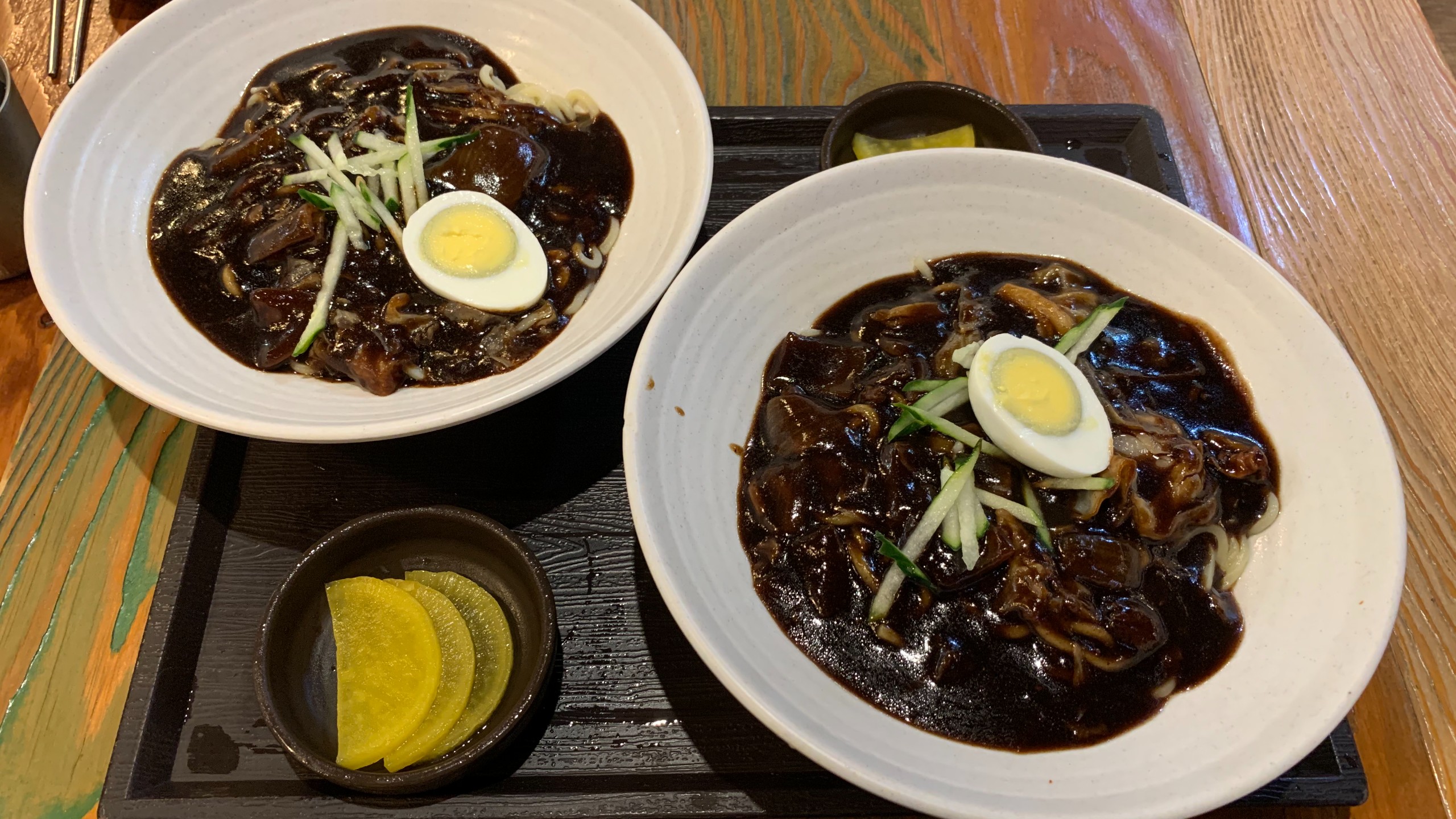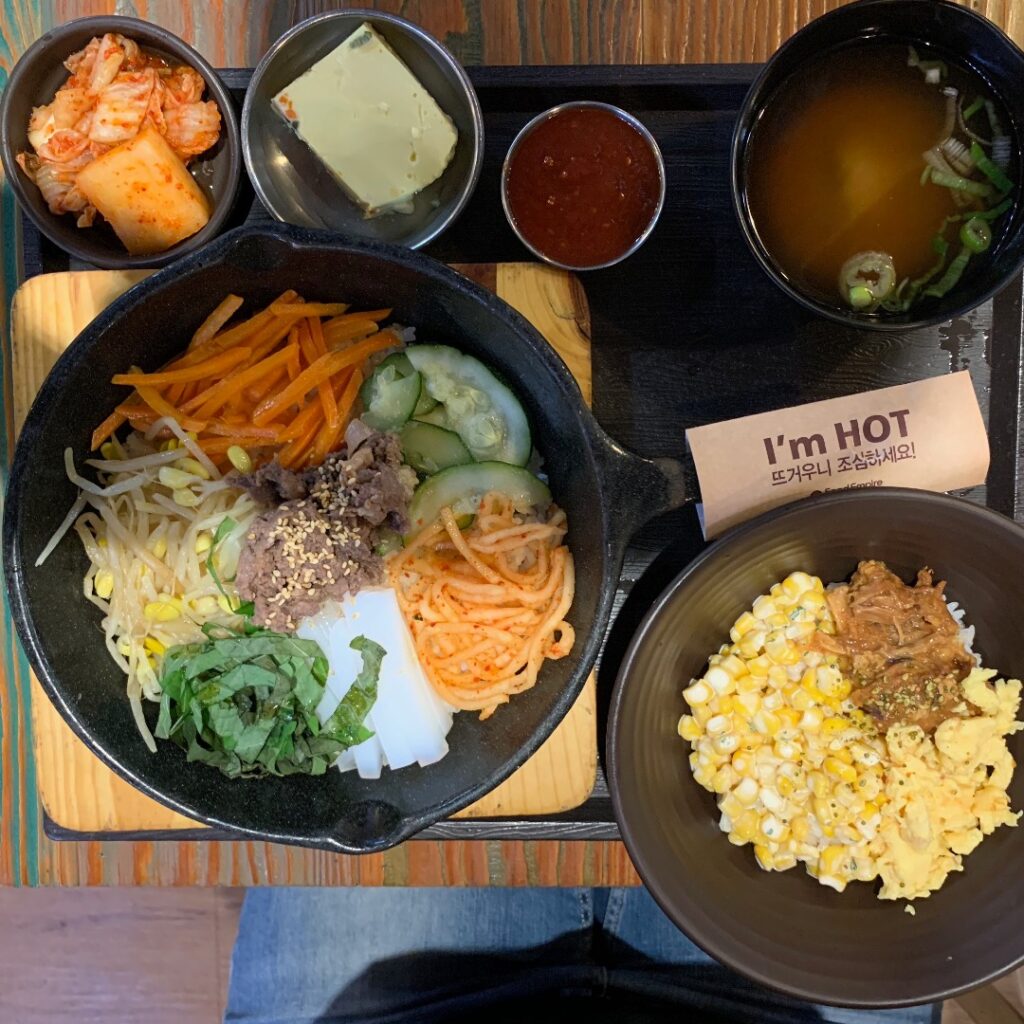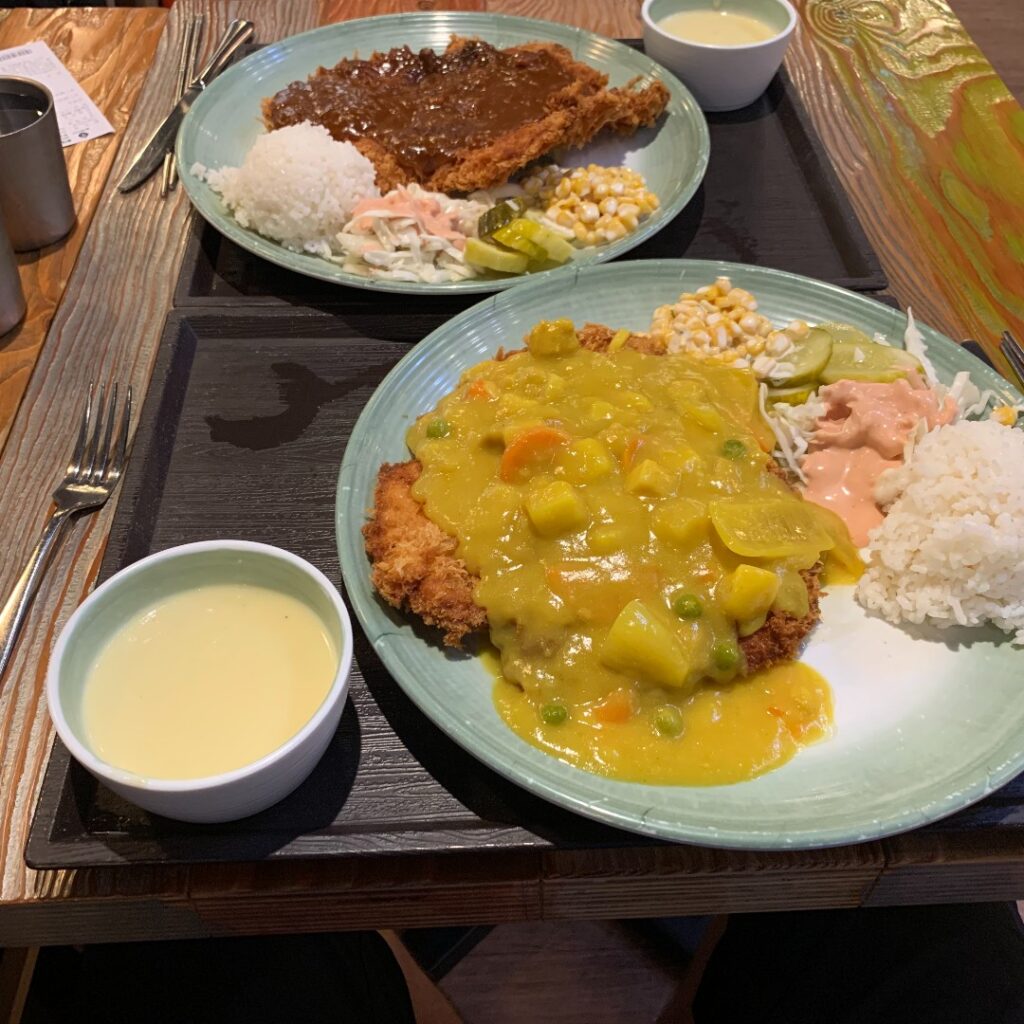
DAY 10
(Reading time: 4 minutes)
South Korea was threatened from below by Typhoon Mitag. It hit Taiwan the hardest, but we also felt its force. Metro stations were closed and residents of Busan warned to only go out when absolutely necessary, as floods were imminent. Later (after our comeback to Seoul), we learned from the news that 6 people lost their lives in Busan, and strong winds and rain caused landslides in addition to floods.
In the western Pacific, typhoons are common in summer and even at the beginning of autumn, so you should be very careful when choosing the date of your trip. In better cases, you’ll just be annoyed by bad weather, but let’s not even think about the worst. We flew at the end of September/beginning of October, when the chance of typhoons is minimal, and still, one caught up with us.

A day of continuous and relentless rain is ideal for eating properly. Several times.
We associate traveling with trying different foods, especially local traditional ones. Some of them taste so good that we need to eat them again and again, or even find ingredients back home and cook them ourselves. A shining example is jjajangmyeon, which we had several times in Korea: at grandma and grandpa’s in Gyeongju, in Lotte shopping center in Busan, and also as an instant noodle meal (it’s very good and available in European countries, too).

The supposedly most beautiful food in the world is said to be Korean bibimbap (pictured at the bottom left).

It’s a dish served in a bowl with rice at the bottom and various types of vegetables (cooked, fried and/or raw), ground beef, and a bull’s eye egg right on the top of it all. Typically, it’s served with gochujang (Korean chilli paste), which you can but don’t have to use to flavor/spice up the dish.
We probably enjoy curry the most. You can prepare it in a million different ways and it’s always good. Spicy or mild, with rice, potatoes, vegetables, or even with a schnitzel bigger than your head.

However, it must be mentioned that no curry has ever surpassed the taste of our beloved CoCo Curry Ichibanya chain.
I mustn’t forget about kimbap. In the picture below, those are the sliced rolls that look like sushi but aren’t sushi. This popular Korean meal is a rolled seaweed with rice and a diverse filling made from what the Korean land has to offer: radishes, carrots, eggs, beef, cucumbers, spring onions… but no raw fish. And it’s not dipped in soy sauce either, as that could offend Koreans a bit.

In the photo, also notice the small plastic bottle of banana milk (excellent sweet refreshment) and tea at the bottom. In every hotel room in South Korea where we stayed, this brown rice tea was regularly replenished for us. We had never drunk anything like it, and I must say that it tastes really unusual (nobody we know likes it), but we got used to it so much that we regularly buy it in Korean grocery stores and always have plenty at home.
Korean food, especially after our trip to South Korea, has become a natural part of our menu about as much as others can’t do without, for example, Italian pasta.
-endy-
DONKEY’S SPECIAL:
-mj-